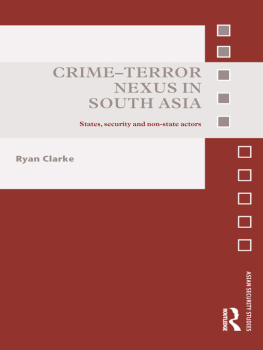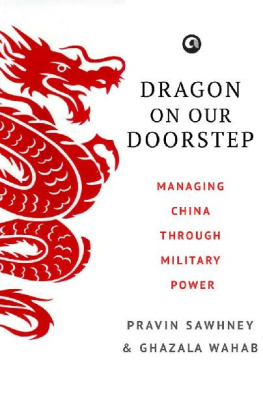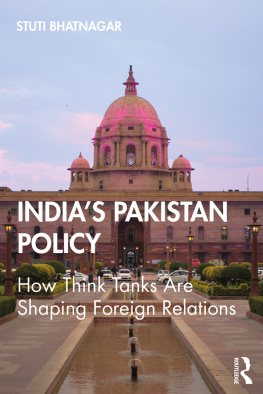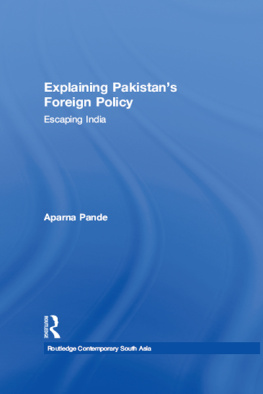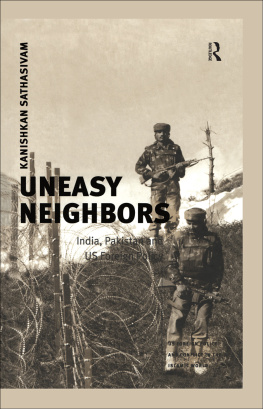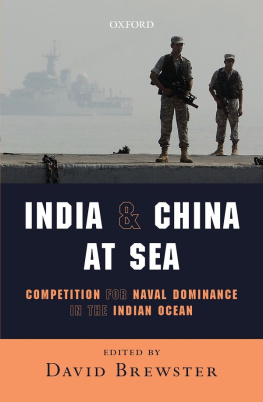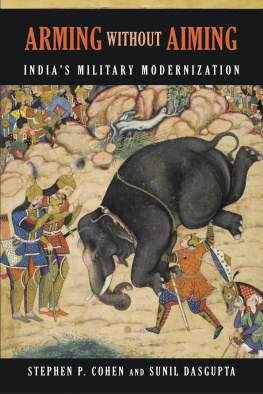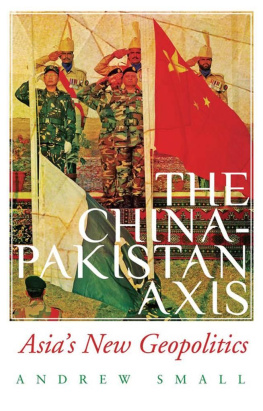Published by
Vij Books India Pvt Ltd
(Publishers, Distributors & Importers)
2/19, Ansari Road, Darya Ganj
New Delhi 110002
Phones: 91-11-43596460, 91-11- 47340674
Fax: 91-11-47340674
e-mail :
web : www.vijbooks.com
Copyright 2015, Centre for Joint Warfare Studies (CENJOWS), New Delhi
ISBN : 978-93-84464-72-1
All rights reserved
No part of this book may be reproduced, stored in a retrieval system, transmitted or utilised in any form or by any means, electronic, mechanical, photocopying, recording or otherwise, without the prior permission of the copyright owner. Application for such permission should be addressed to the publisher.
The views expressed in the book are of the author and not necessarily those of the Centre for Joint Warfare Studies/publishers.
| 1 | BACKGROUND TO SINO PAK COLLABORATION |
Sino Pak relations were in a dormant state in 1947 at the time of creation of Pakistan. Pakistan was the third non-communist country and first Muslim country to recognize Peoples Republic of China on 4 January, 1950, after breaking its relations with the Republic of China (Taiwan). The initiation of formal relations between the two countries can be traced back to May 1951, when Pakistan established diplomatic relations with China. Bilateral relations were further strengthened at the Bandung Conference in 1955, when talks between the two heads of state played an important role in promoting, understanding and paving way for friendly relations and mutual assistance between the two countries. In 1961, Pakistan furthered its relations with China when it voted in favour of Chinas restoration rights in the UN. Military aid from China to Pakistan began in 1966, strategic alliance was formed in 1972 and economic co-operation began in 1979. Maintaining close relations with China has been a central part of Pakistans foreign policy. The foundation of relations between China and Pakistan took place at the behest of USA during the Cold War period. The U.S. policy at that time was to support any regime which was opposed to Soviet Union and its form of communism. At the outset, Sino-Pak relationship was based on their common security concerns. During the early stages of their relations, both the countries had to face security challenges for their survival. In 1948, Pakistan was engaged in a war against India over Kashmir and in 1950 China was drawn into the Korean War. The Soviet-Chinese union provided strength to China, but there was no international support for China. Meanwhile, Pakistan had joined the U.S. as an ally against the expansion of communism by joining Southeast Asia Treaty Organization (SEATO) in 1954 and the Baghdad Pact in 1955. Although this alliance provided Pakistan with economic and military aid, it was virtually abandoned in its hour of crisis during the 1965 Indo-Pak war. Similarly, during the Sino- Indian conflict in 1962, India received economic and military aid from both USA and USSR. Since both China and Pakistan had fought wars with India, they had a common threat in the neighbourhood which became a strong binding factor for them. When the USSR supported India against China during the Sino-Indian border clash in 1962, Beijing realized that it should normalize relations with the USA. Pakistan played a key role in bringing United States and China to the discussion table and bridged their differences by identifying the Soviet Union as their common enemy. The 1971 Indo-USSR Treaty of Friendship posed another challenge to both Pakistan and China.
Geographical realities also brought both countries together. During the 1950s and 1960s both were considered as weak states. Geographically, both were in near proximity to their rivals. China, which harboured a historical hostility toward Japan and fell off with both India and the Soviet Union during those two decades, has adjoining borders with all three countries. Pakistan on the other hand had unfriendly neighbours-India and Afghanistan-to both its east and its west, a fact that figured prominently in Pakistans security perspectives. Though geographical proximity and security issues led the two states to come together and without doubt United States played a key role in cementing the Sino-Pak relationship. Pakistan was driven by its paranoia about India, which brought it closer to China. In the early 1960s, Beijing was determined to obtain a hedge in South Asia against what it perceived as Indias ambitions. Islamabads support in the Sino-Indian boundary dispute endorsed Chinas outreach to its neighbours and Chinas anti-India policy provided the foundation for the Sino-Pakistani relationship to move forward.
The relationship gathered momentum in 1962, when China and India were engaged in a war over the disputed territory of Aksai Chin and the territory then known as the North East Frontier Agency. China defeated India. As a last-ditch effort, India approached USA for military support which saw it as an opportunity to gain a foothold in the region against the spread of Soviet and Chinese communism and began providing military support to India. Americas other partner in the region, Pakistan, did not look favourably on Washingtons support to its enemy. Pakistan had joined the SEATO as well as CENTO in 1954 as part of USAs efforts to establish a barrier around Soviet and Chinese communist powers. Pakistan even gave USA use of a top-secret air base to fly U2 reconnaissance missions over the Soviet Union. In return, the U.S. equipped and trained Pakistan military, which used the equipment and training to strengthen its negotiating position with India in talks over Kashmir and to prepare for a conventional war with India. Therefore for Pakistan, Americas support to India in the Sino-Indian conflict was treated as a betrayal.
China took advantage of this rift to reach out to Pakistan. In the early 1960s, both the countries signed two landmark agreements and began joint construction of a major roadway, which added significant weight to their relationship. The first agreement was a bilateral trade pact signed in 1963. The second was the 1963 Sino- Pakistan Frontier Agreement, wherein China ceded more than 1,942 square kilometers to Pakistan and Pakistan on its part recognized Chinese sovereignty over 5,180 square kilometers of area in Northern Kashmir and Ladakh region. The two countries also began collaboration on a major project to build the Trans-Karakoram highway, often referred to as the Friendship Highway. This highway connects the northern areas of Pakistan to the Xinjiang province in China and its construction commenced in 1966 and is considered vital for commercial and strategic purposes.
The security dimension of the relations between the two countries surfaced and became evident during the 1965, Indo-Pak war. China was vocal in its support of Pakistan and deemed India as the aggressor. It even alerted its troops on the Indo-Tibet border to pressurize India. As a result of this, India came under pressure and acted cautiously in order to not displease the Chinese. Considering that 1965 war ended in a stalemate, one can assume that China was instrumental in boosting the morale of Pakistan during the war. Despite that there were no significant gains but every move fortified the friendship and gave Pakistan a sense of security it had always longed for. The Chinese support hailed by the Pakistanis further strengthened friendship.


